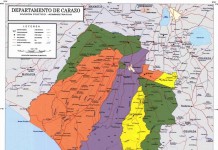
What is Temporary Protected Status?
Note: This is meant to provide general information, not legal advice.
According to U.S. Citizenship and Immigration Services (2017) a country may be designated for Temporary Protected Status (TPS) when conditions in that country temporarily prevent the country’s nationals from returning safely, or under certain circumstances, where the country is unable to handle the return of its nationals adequately.
The Secretary of Homeland Security (DHS) may designate a country for TPS if there is ongoing armed conflict in that country, if an environmental disaster or an epidemic has occurred there, or for other extraordinary and temporary conditions.
During the designated period, TPS beneficiaries are not removable from the United States, can obtain employment authorization (EAD), and in principle may be granted travel authorization, though this is very rarely used. Unlike undocumented immigrants, TPS beneficiaries cannot be detained by DHS on the basis of their legal status. However, unlike other forms of permanent legal residence, TPS is a temporary benefit that does not lead to lawful permanent residence status or any other immigration status (United States Citizenship and Immigration Services 2017).
Importantly, TPS is only granted if it is consistent with U.S. national interests (Segerblom 2007; Seghetti, Ester, and Wasem 2015) and, contrary to refugee or asylum status, TPS is granted based on country conditions, not on individual situations (Bergeron 2014).
Source: National TPS Alliance.































